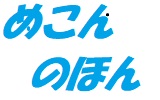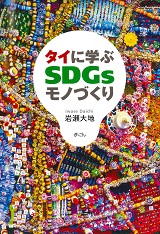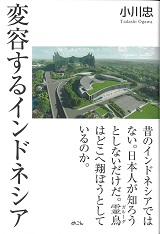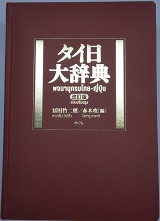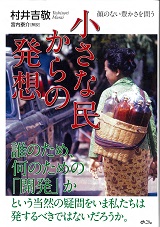フリーのフォトジャーナリストなどでつくる「日本ビジュア
ルジャーナリスト協会(JVJA)」のメンバー5人と雑誌「DAY JAPAN」編集長の広河隆一さんは13日、福島第一原発付近の放射線量を計測したところ、携帯していた計器のメーターが振り切れ、計測不能だったことが明らかとなった。OurPlanetTVの白石草さんの報告と映像をお届けする。記事の最後に、英文への翻訳記事(翻訳:石井琢悟)を掲載している。(日刊ベリタ編集部)
<動画>
http://www.youtube.com/watch?v=IqqLU4q1dBg
福島原発の取材のため、この日、双葉町に入ったのは、フォトジャーナリストの山本宗輔さん、森住卓さん、野田雅也さん、豊田直己さん、綿井健陽さん、広河隆一さんの6人。前日に郡山に入り、13日、既に避難地域となっている双葉町に入った。
午前10時20分時双葉町役場玄関付近で放射線を計測。すべて測定器が振り切れた。更に午前10時30分頃 双葉町厚生病院玄関前で計測したところ、ここでも、すべての計測器が振りきれたという。
使用した計器は「BEIGER COUNTR DZX2(上限は1000マイクロシーベルト/時)と「VICTOREEN 209-SI(上限は10ミリレントゲン/時以上)」及び「MYRate PRD-10/1(上限は9.9マイクロシーベルト/時))の3台。上限を超えているため、正しい値を確認することはできなかった。
原子力問題のスペシャリストでもある広河隆一さんによると、2月末のチェルノブイリ原発取材で、事故炉から200メートル付近で計測した値は4ミリレントゲン。事故炉から4キロ離れた、プリピャチ市で計測した値は0,4ミリレントゲンで、いずれも今回の計測が上回っており、非常に高い水準にあるという。
しかし、取材の途中、役場などで避難していないと思われる住民と遭遇。また帰路の国道288号線でも、多くの住民が双葉町の自宅に戻っているところを目撃したという。ほとんど住民が双葉町の高汚染について知らず、植物に水やりをしたり、服を取りに帰る途中だった。中には子どもを乗せた車もあった。
取材班が車を止め、長時間の滞在は危険であることを知らせた。半径二〇キロ圏内立ち入り禁止の表示も、検問もなかったという。
広河さんは、余計な被ばくを広げないためにも、政府がきちんと情報提要すべきだと話している。
※音声も映像も非常に不十分な状態であることをお詫びいたします。このリポートは毎日継続する予定です。
[Nuclear power plant accident]
High radiation dose exceeded the maximum measurement limit
–Photo journalists breaking in the hazard area of Fukushima Nuclear Power Plant–
Five members of Japan Visual Journalist Association (JVJA), which is mainly organized by freelance photo journalists, and Ryuichi Hirokawa, Chief Editor of the journal “DAYS JAPAN”, measured the radiation dose in the neighborhood areas of Fukushima Nuclear Power Plant No.1. The radiation dose was so high that the indicators of their handy detectors exceeded the ranges for measurement.
The following are the report and movie provided by Hajime Shiraishi, a member of OutPlanetTV.
--- Movie ---
http://www.youtube.com/watch?v=IqqLU4q1dBg
Six photo journalists, Sosuke Yamamoto, Takashi Morizumi, Masaya Noda, Naomi Toyoda, Takeharu Watai and Ryuichi Hirokawa entered Futaba Town on 13. May for the research of Fukushima Nuclear Power Plant. They preliminarily stayed in Koriyama City on the preceding day and moved to Futaba Town that was already designated as an area from which people had to escape.
They measured radiation dose at a spot near by the main entrance of Futaba Town Office at 10:20 a.m. The indicators of every detector swung out of the maximum limit. They also measured radiation dose at a spot in front of the main entrance of Futaba Town Kosei Hospital at 10:30 a.m. Again, all detectors showed higher values than their maximum limits.
They used three detectors: Geiger Counter DZX2 (max. 1,000 μSv/hr), VICTOREEN 209-SI (max. 10 mR/hr) and MYRate PRD-10/1 (max. 9.9 μSv/hr). Journalists could not find exact values since the observed indications exceeded every maximum limit.
According to the research performed in last February by Ryuichi Hirokawa, who is a specialist in nuclear problems, the radiation dose measured at a spot about 200 m apart from the reactor that caused the accident at Chernobyl was 4 mR/hr. The result measured in Pripyat City, 4 km apart from the reactor, was 0.4 mR/hr. The values obtained this time exceeded those obtained nearby Chernobyl, indicating that the radioactive levels 3–3.5 km aprt from Fukushima are very high.
Nevertheless, they met residents who seemed not to have escaped to safe places. On their back trip on National Route 288, they found many people being back to their home in Futaba Town. Most residents did not know about the heavy pollution in Futaba Town, hence they were watering plants and flowers or looking for their cloths to bring back. Some were even driving with their children.
Journalists stopped the car and informed people of the danger of staying for a long time. There was neither sign nor checkpoint to tell people the prohibition of entering within a 20-kilometer radius from the nuclear power plant.
“Government should properly provide people information not to spread unreasonable exposure to radiation”, says Hirokawa.
* Please be patient with the insufficiently low quality of the movie. We are planning to release our reports everyday.
|











